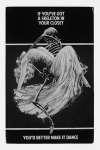Jean
Arp
Arp's groundbreaking work in sculpture and poetry helped shape the language of Abstract Art in the 20th century. His artistic approach is defined by biomorphic forms and exploration of chance. If you're looking for Jean Arp original prints and editions for sale or would like to sell, request a complimentary valuation and browse our network's most in-demand works.
Jean Arp art for sale
Discover Jean Arp prints for sale, exclusively available through our private network of collectors. Explore signed and unsigned screenprints, lithographs, digital prints, and rare editioned proof prints by era-defining blue chip artists.
Sell Your Art
with Us
with Us
Join Our Network of Collectors. Buy, Sell and Track Demand
Biography
Jean Arp's artistic journey began in his birthplace of Strasbourg, where he was exposed to German and French cultures. This dual heritage would profoundly influence his artistic development. Arp initially studied at the Strasbourg School of Arts and Crafts before moving to Paris in 1908 to further his education at the Académie Julian.
In 1911, Arp co-founded the influential group Der Moderne Bund in Switzerland, marking his early engagement with avant-garde movements. However, it was his involvement in the Dada movement, which he helped establish in Zurich in 1916, that set the stage for his revolutionary approach to art.
On 5 February 1916, the Künstlerkneipe Voltaire (Voltaire Artists Tavern), later known as the Cabaret Voltaire, opened in Zurich, serving as a platform for numerous Dadaist events. This space quickly became a hub for avant-garde performances and gatherings, playing a pivotal role in the birth and development of the Dada movement, with Arp as one of its central figures.
Arp's work during this period was characterised by chance and spontaneity, creating collages and reliefs that challenged the notion of the artist as a singular creative force.
As Arp's career progressed, he became increasingly interested in organic, abstract forms. In 1915, he began creating Konkrete Kunst (Concrete Art) – sculptures and reliefs that were meant to exist as independent objects rather than representations of something else. These works, often crafted from wood and later cast in bronze, featured smooth, biomorphic shapes.
One of Jean Arp's most significant contributions to Modern Art was his pioneering use of 'automatic drawing'—a method in which the artist lets go of conscious control over the creation process, allowing spontaneity and intuition to guide the work. This approach aligned with the Dada and Surrealist movements, emphasising the role of chance and the unconscious in art. Arp’s automatic drawings involved letting his pencil or pen move freely across the paper, creating abstract forms without premeditation.
This technique later evolved into his renowned wood reliefs, where he arranged cut-out shapes intuitively, letting chance dictate their composition rather than adhering to a preconceived structure. These methods would influence later artists like Jackson Pollock and the Abstract Expressionists more broadly, who embraced similar ideas of spontaneity and unconscious expression in their work.
In 1925, Arp's work was included in the first Surrealist exhibition at the Galerie Pierre in Paris, affirming his position as a key figure in the movement. Throughout the 1930s and 1940s, he continued to refine his sculptural practice, creating increasingly large-scale works that explored the interplay between positive and negative space.
Arp's artistic output was not limited to visual art. He was also a prolific poet, publishing several volumes of verse in both German and French. Like his sculptures, Arp’s poetry often incorporated abstract concepts and surreal imagery, expressing his fascination with the natural world and the unconscious mind. Through inventive wordplay and unexpected combinations, he often playfully discarded conventional grammar and syntax.



























